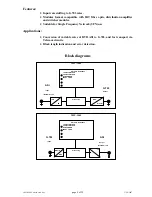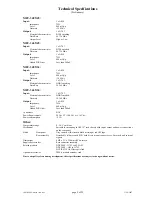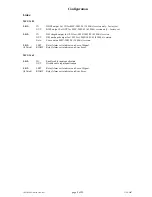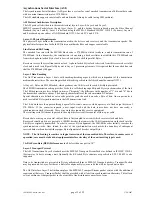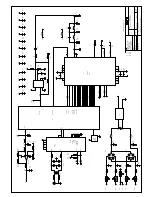
3465&3485-mfc.ib.rev4.doc
page 17 of 22
17/10/2007
Convolutional interleaving
Convolutional interleaving with depth I = 12 is applied to the error protected packets (see figure 2c). This results in
an interleaved frame.
The convolutional interleaving process is based on the Forney approach which is compatible with the Ramsey type
III approach, with I = 12. The Interleaved Frame is composed of overlapping error-protected packets and is
delimited by MPEG-2 sync Bytes (preserving the periodicity of 204 Bytes).
The interleaver may be composed of I = 12 branches, cyclically connected to the input Byte-stream by the input
switch. Each branch is a First In First Out (FIFO) shift register, with depth (Mj) cells (where M = 17 = N/I,
N = 204 = error protected frame length, I = 12 = interleaving depth, = branch index). The cells of the FIFO shall
contain 1 Byte, and the input and output switches is synchronised.
For synchronisation purposes, the sync Bytes and the inverted sync Bytes are always routed into the branch 0" of
the interleaver (corresponding to a null delay).
The de-interleaver is similar, in principle, to the interleaver, but the branch indexes are reversed (i.e. j = 0
corresponds to the largest delay). The de-interleaver synchronisation can be carried out by routing the first
recognised sync Byte into the "0" branch.


